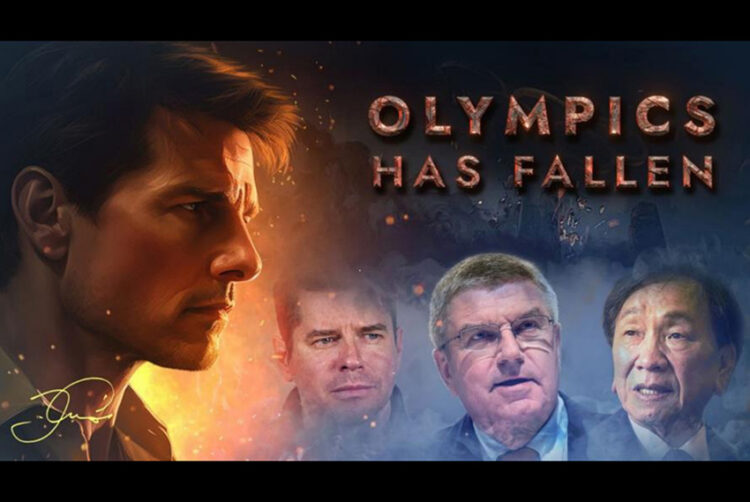2024: A tinderbox year for disinformation

Opinion
With geopolitical tensions, technological advances and political polarisation at an all-time high, what can be done in this new era of information warfare?
It is said that truth is the first casualty of war. In 2024, truth has not just been wounded, it has been taken hostage, manipulated and reshaped into something unrecognisable.
The battlefield is the mind, the weapon is disinformation and the casualties may well be the very foundations of democratic society.
The old rules no longer apply. What we face now is a new kind of asymmetric conflict — one where both non-state actors and non-democratic regimes, adept in the dark arts of digital deceit, stand to gain the most from the chaos they sow.
This year was never going to be an ordinary one. With 64 nations set to elect their leaders, the stakes were high. But what sets 2024 apart is not just the sheer number of ballots to be cast, but the unprecedented convergence of political, social and technological upheaval.
The world finds itself in the grip of ongoing conflicts and geopolitical tensions, rapid advances in technology and a hyper-politicised global environment. These factors have combined to create a tinderbox, where underlying issues of mistrust, division and fear have ignited into widespread disinformation campaigns.
Calculated exploitation
What we are witnessing is not random or sporadic, but a deliberate and calculated exploitation of this volatile landscape by those who seek to destabilise.
Take, for instance, the recent riots in the UK that erupted following the tragic stabbings in Southport. The rumour mill spun quickly, falsely claiming that the attacker was an immigrant — a spark that ignited far-right protests and an eruption of violence. The truth — that the perpetrator was a local youth — came too late, obscured by the thick smoke of online misinformation.
These riots were not merely a spontaneous outpouring of rage, but were fuelled by those with interests in undermining the fabric of British society, exploiting underlying tensions that have been bubbling beneath the surface for years.
Across the Channel, Paris — normally a beacon of culture and light — was not immune to disinformation as it prepared to host the Olympic Games.
One notable example is the “Olympics Has Fallen” fake documentary, which attempted to portray Paris as a city in decline, exploiting fears around terrorism and pollution.
This disinformation campaign, which some have accused Russia of orchestrating, was specifically intended to undermine France’s ability to host a successful Olympics, casting doubt on the country’s preparedness and stability. While some of this content appears to be driven by AI-generated imagery and co-ordinated social media efforts, it reflects a broader strategy to exploit social tensions and undermine unity.
But perhaps the most malign threats lie across the Atlantic, where the 2024 US presidential election is shaping up to be a digital battlefield unlike any we’ve seen before. The rise of generative AI has made it possible for anyone with a fragment of tech savviness to create deepfakes and misleading content.
Imagine the possibilities.
Misinformation vs disinformation: A crucial distinction
Amid the digital chaos of 2024, it’s crucial to distinguish between two powerful forces: misinformation and disinformation.
Misinformation is false or inaccurate information spread without malicious intent — often by those unaware of its inaccuracy. It is the rumour that spreads unchecked; the viral post shared without scrutiny.
Disinformation, however, is far more deceptive. It is false content, deliberately crafted to deceive, manipulate and destabilise. Unlike misinformation, disinformation implies the weaponisation of information, wielded with intent, aimed at undermining trust, sowing confusion and eroding the foundations of truth.
This distinction is critical as we navigate the challenges of 2024. In a year when the stakes could not be higher, understanding the difference between these two forms of falsehood is not just academic; it is essential to preserving the very fabric of our democracies.
While misinformation may be corrected and curbed through awareness and education, disinformation requires a far more robust defence — a recognition that the enemy is not just ignorance but a calculated assault on the integrity of our shared reality.
Information warfare: A new era of conflict
Like propaganda and cyberattacks, misinformation and disinformation are tactics deployed in the broader phenomenon of information warfare. This is a type of warfare that seeks to achieve political or geo-strategic objectives without traditional military force.
It does not require physical conflict, but instead exploits the media and information systems of the digital age to subvert an adversary’s population and undermine and weaken its institutions, ultimately leading to self-destruction.
What we are witnessing is the evolution of warfare itself. No longer confined to battlefields and diplomatic tables, conflict in 2024 is fought in the depths of the internet, where truth is a malleable concept and reality is whatever can be made to seem plausible.
Autocratic regimes and non-state actors have mastered the asymmetrical balance of power. They recognise that, in an open society, where information flows freely and rapidly, the truth is a double-edged sword — one that can be twisted and turned against the very principles that uphold it.
To truly grasp the gravity of this new form of warfare, we need only look back to the Cold War, when propaganda was the weapon of choice. The Soviet Union and the US each sought to undermine the other’s ideology through carefully crafted messages, often targeting vulnerable populations in Africa, Asia and Latin America.
Yet the tactics of the past seem almost quaint compared with the rapid, all-encompassing disinformation campaigns of today. What once took weeks or months to disseminate through print and radio can now be accomplished in seconds, with AI-generated content that blurs the line between reality and fiction.
A global struggle
Germany has implemented strict regulations to combat online hate speech and misinformation — and yet it, too, faces challenges as disinformation seeps into the public discourse.
And the issue is not confined to the West. Countries such as India and Brazil have faced their own battles against misinformation during recent elections, where false narratives spread through social media have led to unrest and violence.
The digital age has transformed every election, every political movement, into a potential target for those who seek to relish in turmoil.
So the rise of tactics such as misinformation and disinformation can be seen as part of a broader geopolitical strategy, where information warfare is used not just to influence outcomes but to fracture institutions that uphold societies.
By planting seeds of doubt and division, disinformation campaigns aim to weaken adversaries from within, making them more susceptible to external pressures and internal division.
In this context, the unrest we see on the streets, the polarisation within our communities and the erosion of trust in our institutions are not isolated phenomena. They are interconnected — part of a grander design to sabotage democratic societies from inside out.
2024 has become the tinderbox in which these underlying issues have come to fruition. With geopolitical tensions, technological advances and political polarisation at an all-time high, the conditions are ripe for disinformation to thrive. The instability we see today is not a series of random or sporadic events occurring in silo, but the result of these factors converging.
Potential solutions
Given the scale of the threat, what can be done?
Regulatory measures are a start. The EU’s Digital Services Act and the UK’s Online Safety Act represent steps towards holding tech companies accountable for the content they host. In the US, there is ongoing debate about reforming Section 230, which currently provides immunity to online platforms for content posted by users.
But regulation alone is not enough. Public awareness is equally critical.
Media literacy must become a cornerstone of education, teaching people how to discern credible information from falsehoods. In a timely move, Bridget Phillipson, the UK’s education secretary, announced plans to review the school curriculum in England to embed critical thinking skills across subjects, equipping children to identify fake news and extremist content online.
However, efforts to combat disinformation face significant challenges. The recent closure of the Global Alliance for Responsible Media (GARM), following an antitrust lawsuit by Elon Musk’s X, underscores how fragile collective efforts against harmful content can be.
GARM, which helped advertisers avoid placing brands alongside extremist content, was effectively shut down by legal pressures, raising concerns that this could worsen the spread of misinformation.
The closure of GARM leaves a vacuum where harmful content can thrive, highlighting the urgent need for stronger regulations and industry co-operation to keep the fight against disinformation on track. Nonetheless, even as we educate and regulate, disinformation tools are evolving faster than our ability to counter them.
The road ahead
Looking ahead, we must ask ourselves: are our institutions, our laws and our media robust enough to withstand the onslaught of digital deceit?
Or are we, too, to become casualties of this new kind of war — left to pick up the pieces in a world where trust has been shattered and reality itself is up for debate?
If truth is the price we pay, can we ever truly claim victory? As the lines between fact and fiction blur, will we observe passively or will we equip ourselves with the tools to discern, question and defend what is real?
It may be ironic yet fitting to end with a quote from Vladimir Lenin: “There are decades where nothing happens; and there are weeks where decades happen.”
Indeed, the weeks and months ahead will tell. And when the dust finally settles and the history books are written, the most important question may not be who won the battle for narrative, but whether we still recognise the world in which it took place.
 Struan Murray is a public relations professional and holds a master’s degree in strategic communications from the Department of War Studies at King’s College London
Struan Murray is a public relations professional and holds a master’s degree in strategic communications from the Department of War Studies at King’s College London




